Arthur Kolnik’s wordless publication, Sous Le Chapeau Haute Forme (Under the Top Hat) of 1934, does not have images that form a coherent story. The introduction gives some insight into the concept but it lacks a story arc.

Born May 4, 1890 in Stanislaviv (today Ivano-Frankovsk), Ukraine; died June 6, 1971 (age 81) in Paris, France. A Jewish painter and printmaker; he studied at the Academy of Fine Arts in Krakow in the studio of Professor Joseph Mehoffer. Kolnik was mobilized to serve in the army during World War I.
He exhibited in the United States of America in 1921. Upon return Kolnik settled in Chernivtsi. In 1931 the artist moved to Paris. There he worked as illustrator. In 1940, he was interned at Camp du Récébédou in Haute-Garonne with his wife and daughter.
1934 Sous Le Chapeau Haute Forme (Under the Top Hat)
- Title: Sous le Chapeau Haute Forme: 24 Gravures sur bois
- Author and Illustrator: Arthur Kolnik
- Introduction: by the French writer, Henri Barbusse
- Date: 1934; the wood engravings were executed in the winter of 1932-1933
- Publisher: Editions Les Ecrivains Réunis
- Place of publication: Paris
- Printer: l’ Association des Maîtres- Imprimeurs à Paris under the direction of E. J. Pouvreau
- Copyright: Arthur Kolnik?
- Size: 32 x 25 cm; Dimensions of the printed image: 18 x 15 cm
- Binding: Folder containing 24 loose wood cuts
- Language: French titles, etc
- Paginated: yes
- Printed: recto
- Edition: 315 copies
- 20 examples on Japan numbered 1 – 20
- 285 examples on velin numbered 21 – 305
- 10 examples hors commerce numbered I to X
- Printed from the original wood engraving blocks
- Description: black and white; [5], 24 leaves : ill.: Folder is card about the same thickness as the sheets but the front has a title sheet lightly glued on.
A Possible Proof/Dummy Copy
At least two copies exist that differ from the final production of the edition limited to 315 copies. The differences suggest they are pre-production copies used in the printing industry to give the printer/artist/author guidance as to what the final product should look like.
The indicators that these copies are not the final production are:
- image numbers are handwritten in black pen just above the top right hand corner of each image. The limited edition has the number printed centre below the image,
- the images are often poorly inked without the pure dark black one would expect,
- both copies have smudge marks in the margins where the printer carelessly handled the leaves with dirty hands,
- in addition to smudges, both copies have black streaks in the margin and marks in the image that don’t exist in the final product,
- both copies have the printed folder, introduction, index, and all the images but neither of these copies have the limitation page,
- While the folder appears to be the same as the limited edition copies the size of the folder (and the sheets with prints) is significantly smaller ie. 26.8 x 21 cm. Note: the image size has not been reduced – suggesting these images were printed from the same blocks.

This folder is made of thin card folded over and a top sheet with printing pasted on the front.

top right hand corner of each image.
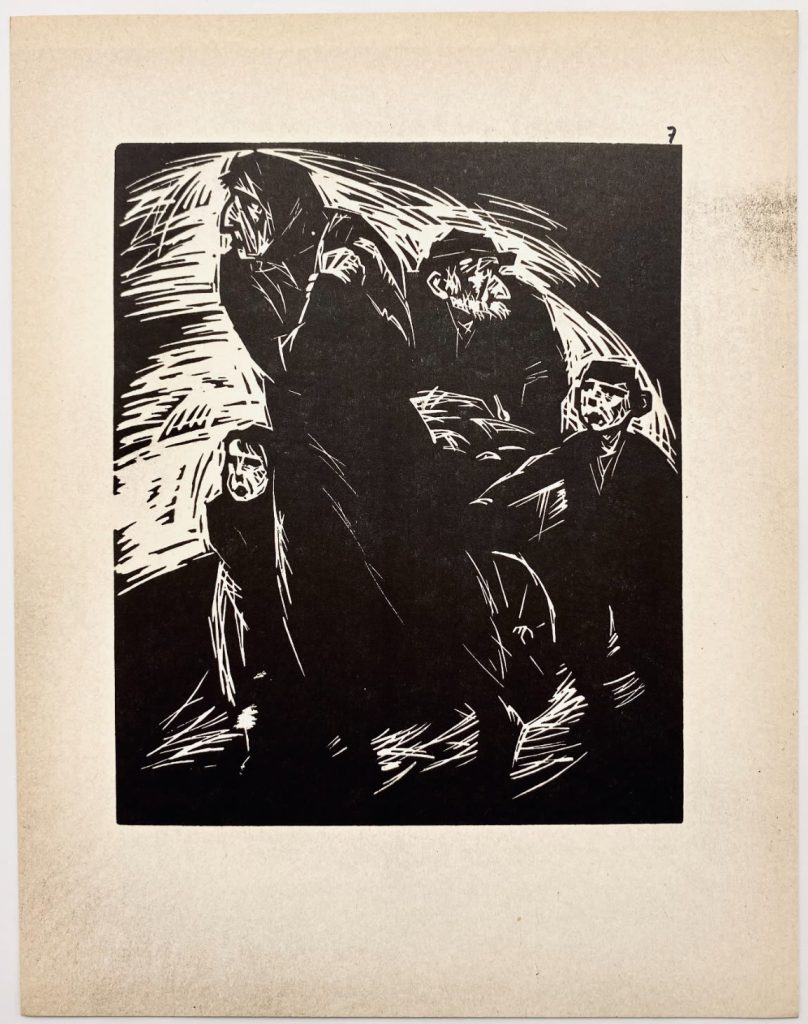
Note: ink hand written number at the top right. Also a number of the pages have ink smudges outside the images as one might expect from a careless printer or a proof copy where the image doesn’t need to be perfect.
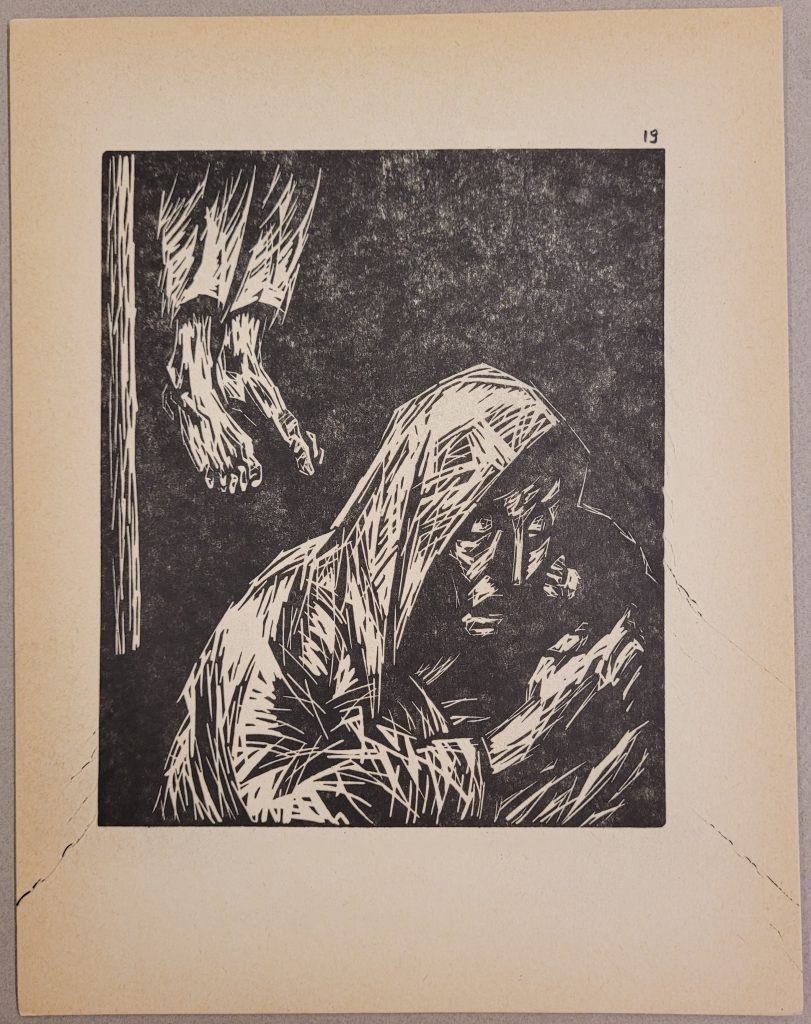
In this image (#19) the black is not adequately inked and there are black striations outside of the image; once again, a carelessly printed image consistent with a temporary item to assist in the production of the real publication.
1934 Limited Edition
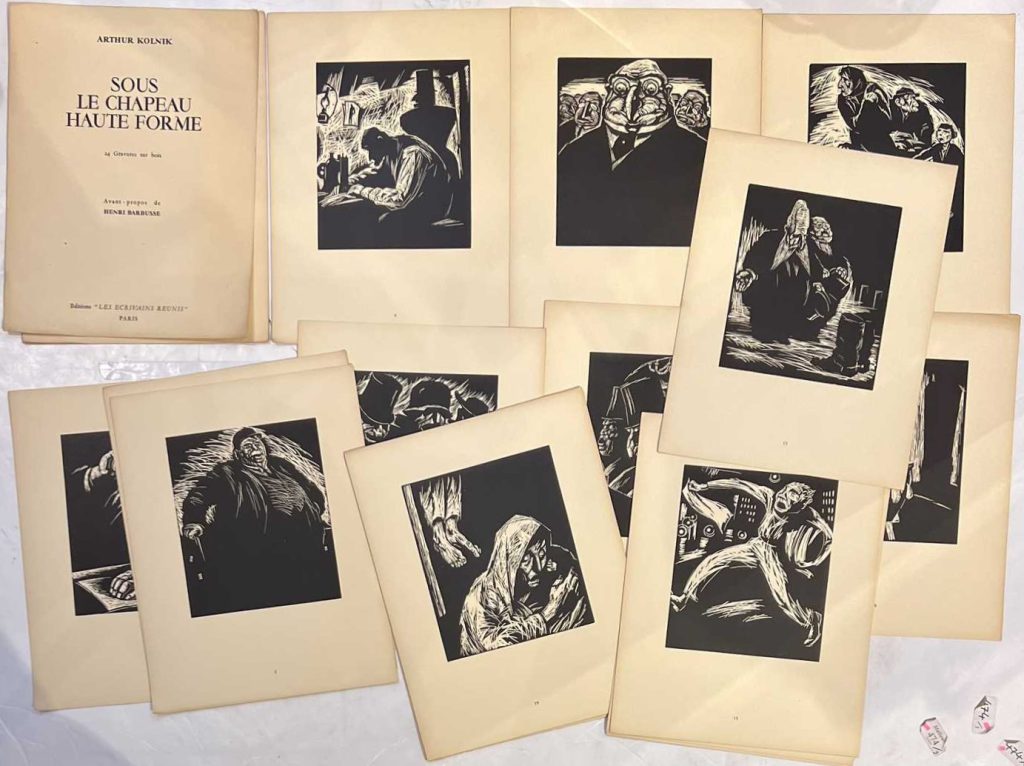

1936 Facsimile – images are smaller
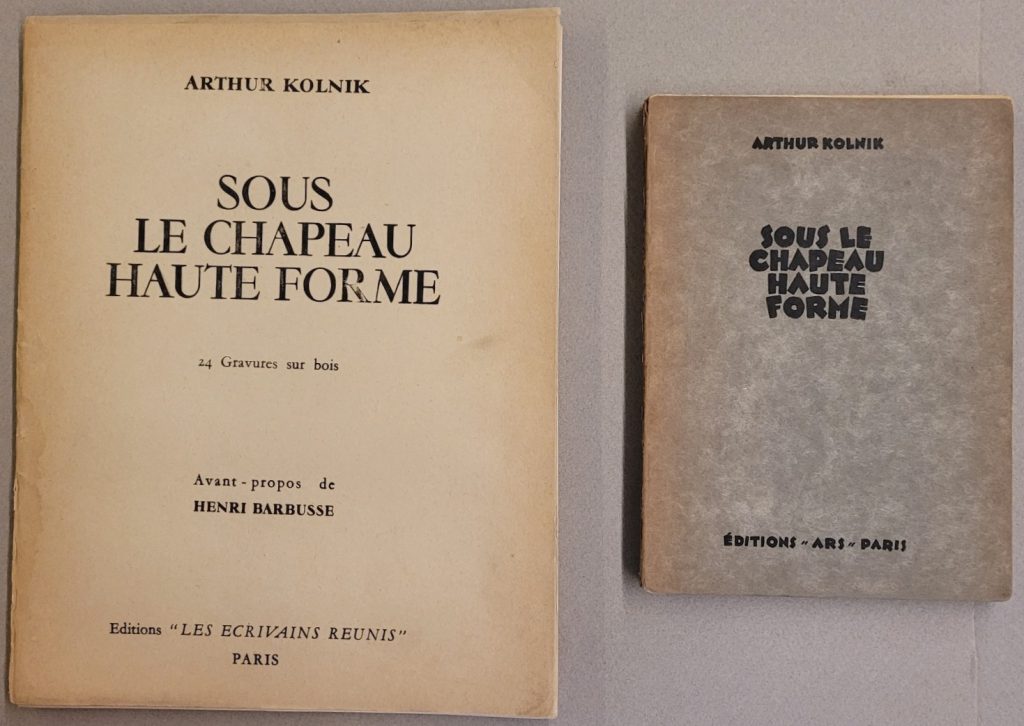
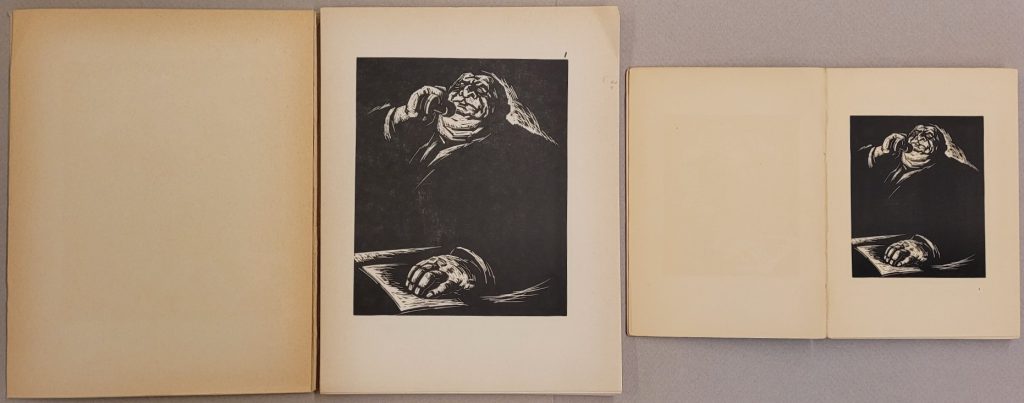
The 1936 edition is substantially the same as the 1934 edition except for the following:
- Publisher: Editions Ars, Les Artistes Juif series (The Jewish Artists Series)
- Date: printing completed November 15, 1936
- Printer: Schiffer
- [5] leaves, 24 plates, [1] leaf,
- Size: 12mo. 7-1/2″ (19 cm) high x 5″ (12.7 cm) wide
- Binding: Soft cover
- Paginated: images numbered lower right under the image
- Printed: recto
- Edition: 1000 copies printed
- these are reproductions of the woodcuts



Translation of the limitation page above: This work was previously published in 1934 by Editions “Les Ecrivains Réunis” in Paris in 25×32 format. The print run was 315 copies, including: 20 copies on Imperial Japanese paper, 285 copies on Vellum, and 10 copies signed by the author, hors commerce. This edition was printed in a print run of 1,000 copies.
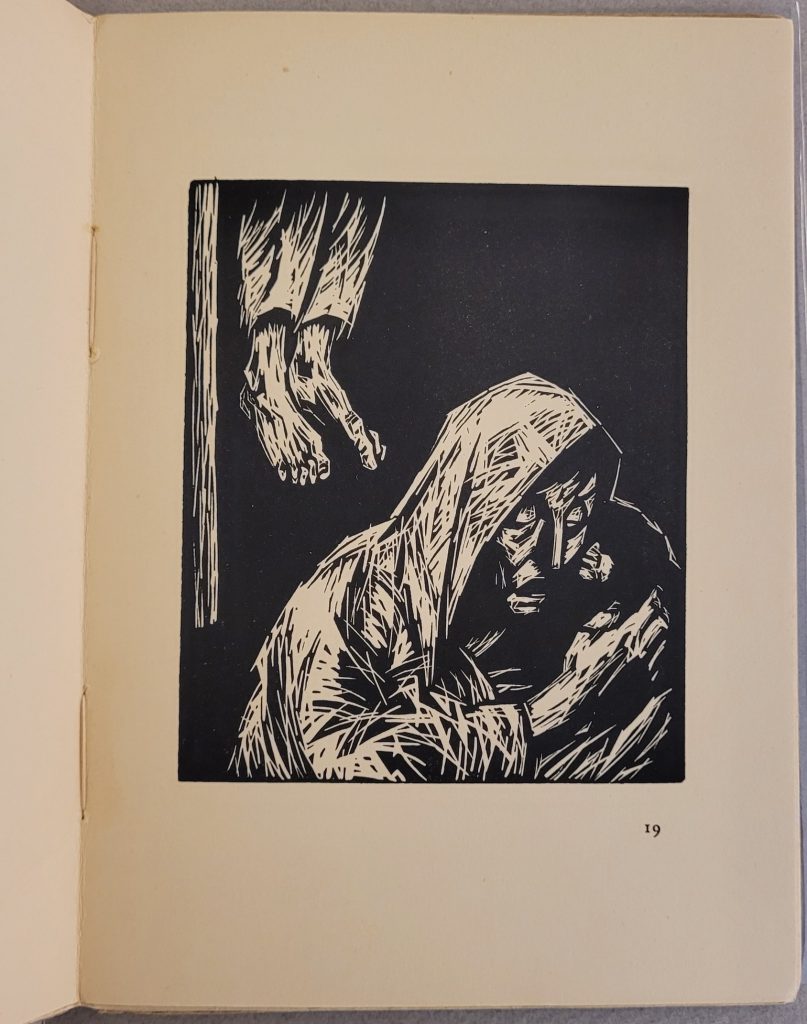
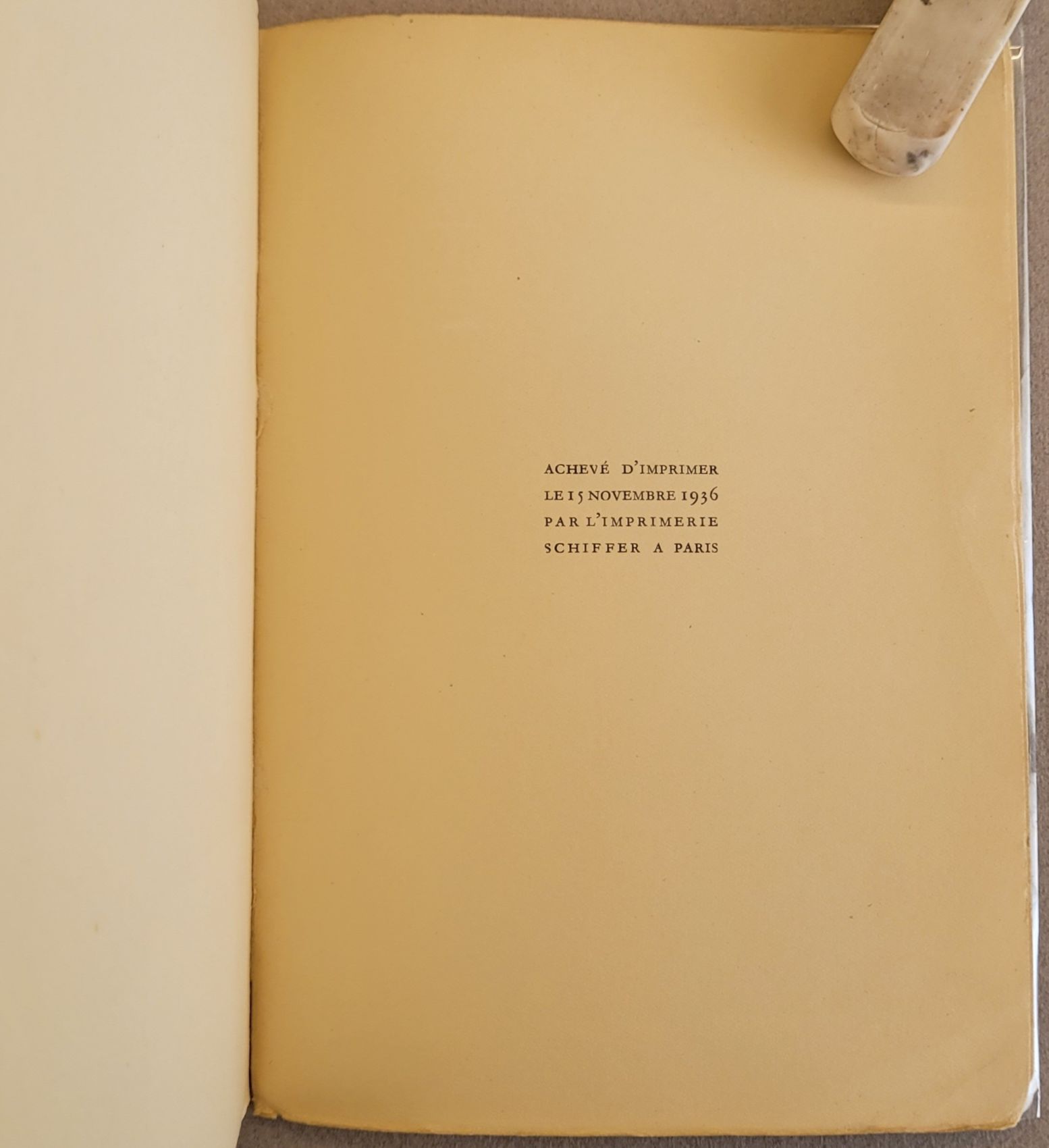
Special thanks to Kurt Webb of Silent Story Books for alerting me to this publication.
COMMENTS
If you disagree with something on this page, have an improvement, or have a comment please contact me
wn at wordlessnovels.com
Any information used will be given a credit line.